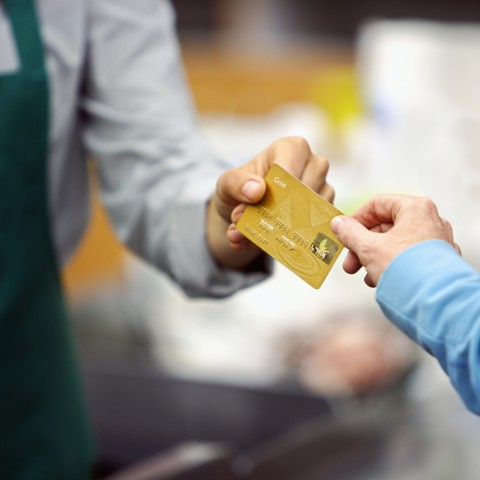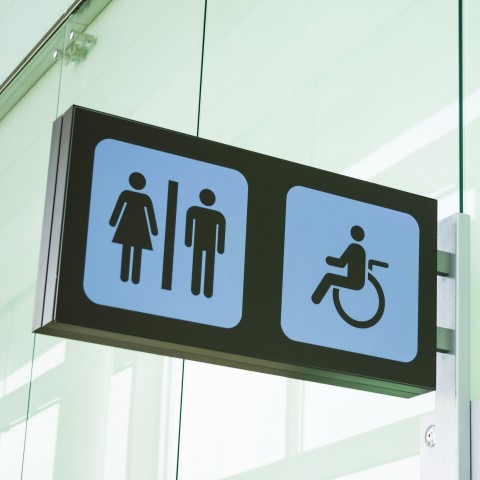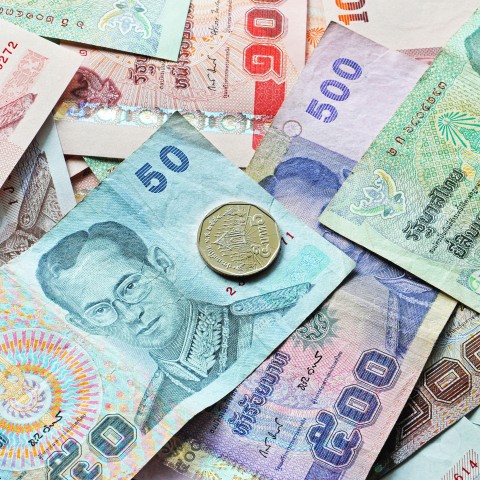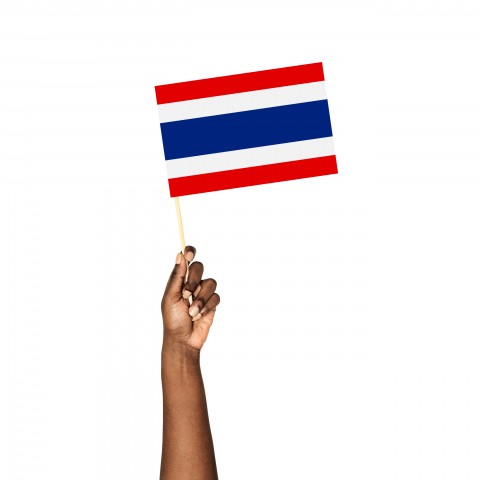Why should you learn Thai adjectives?
The adjective is a very important part of any language. It enables clear and detailed communication, and by using Thai adjectives, you can communicate in Thai like a native. Thus, learning Thai adjectives is a must for all Thai learners.
Both Thai adjectives and adverbs are used to add detail to a sentence, but in this article, we’ll only focus on Thai adjectives. Let’s start our lesson by answering the question, “How do you say adjective in Thai?”
คำคุณศัพท์ (kham khun-ná-sàp) is “adjective” in Thai, and like in every language, adjectives are descriptive words. This article will make learning descriptive Thai adjectives easy!
For your information, there are actually many types of Thai adjectives, but there’s no need to remember adjectives by type. Below is our list of adjectives in Thai, categorized into groups. But first, some information on how to use Thai language adjectives.

Table of Contents
- How to Use Thai Adjectives
- Describing Dimensions, Sizes, Distance & Frequency
- Thai Adjectives for Describing Value
- Thai Adjectives for Describing Feeling and Sense
- Thai Adjectives for Describing Personality and Feelings
- Thai Adjectives for Describing Speed, Difficulty & Importance
- Thai Adjectives for Describing Color
- Thai Adjectives for Describing Shape & Texture
- Thai Food Adjectives: Describing Taste
- Thai Adjectives for Describing Situations
- Describing Physical Traits, Conditions & Appearance
- Conclusion
1. How to Use Thai Adjectives
Let’s learn about Thai adjectives and how to use them. Fortunately, apart from remembering adjectives in Thai vocabulary, how to use Thai adjectives is very easy. When Thai people want to describe something, the pattern they use is “noun + adjective.” For example, ผู้หญิงสวย (phûu-yǐng sǔuai) is “beautiful woman.” Below is a more detailed explanation.
- ผู้หญิง (phûu-yǐng) is “woman” in Thai.
- สวย (sǔuai) is “beautiful” in Thai.
- Combining both words, with the noun first and adjective second, we get ผู้หญิงสวย (phûu-yǐng sǔuai), which means “beautiful woman.”
Sometimes, Thai people put a ลักษณะนาม (lák-sà-nà-naam), or “classifier,” in between the noun and adjective. ลักษณะนาม (lák-sà-nà-naam) is a noun used to describe the feature or structure of the noun in front.
Now that you have the basics down, here’s our Thai adjectives list!
2. Describing Dimensions, Sizes, Distance & Frequency
The first group of Thai adjectives you should learn are those that describe the physical features of an object, distance, and frequency. These are some of the most common Thai adjectives, and you’ll do well to learn these.
1- Big
Thai adjective: ใหญ่ (yài)
Example:
บ้านหลังใหญ่มักราคาแพง
Bâan lǎng yài mák raa-khaa phaaeng
“Big houses are often expensive.”
Opposite word: เล็ก (lék), which means “small” in Thai.
2- Small
Thai adjective: เล็ก (lék)
Example:
ฉันชอบกระเป๋าเล็ก ๆ
Chǎn châawp grà-bpǎo bai lék lék
“I like small bags.”
Opposite word: ใหญ่ (yài), which means “big” in Thai.
3- Wide
Thai adjective: กว้าง (gwâang)
Example 1:
ห้องนอนกว้างมาก ฉันชอบ
Hâawng-naawn gwâang mâak chǎn châawp
“The bedroom is very wide. I like it.”
Example 2:
ถนนเส้นใหม่กว้างดี
Thà-nǒn sêen mài gwâang dii
“The new road is wide.”
Opposite word: แคบ (khâaep), which means “narrow” in Thai.
Additional note: Thai people also use the word “wide” to describe a big area instead of using the word “big.”
4- Narrow
Thai adjective: แคบ (khâaep)
Example 1:
ห้องครัวแคบมาก วางของพอได้ยังไง
Hâawng-khruua khâaep mâak waang khǎawng phaaw dâi yang-ngai
“The kitchen is so narrow. How can you put everything in it?”
Example 2:
ทางเข้าบ้านเธอแคบจัง
Thaang khâo bâan thooe khâaep jang
“The way to your house is so narrow.”
Opposite word: กว้าง (gwâang), which means “wide” in Thai.
Additional note: Similar to “wide,” Thai people also use the word “narrow” to describe a small area instead of using the word “small.”
5- Thick
Thai adjective: หนา (nǎa)
Example:
หนังสือเล่มนั้นหนาเกินจะอ่านไหว
Nǎng-sǔue lêem nán nǎa gooen jà àan wǎi
“That book is too thick to read.”
Opposite word: บาง (baang), which means “thin” in Thai.
6- Thin
Thai adjective: บาง (baang)
Example:
ใส่เสื้อบางมากจะทำให้เป็นหวัด
Sài sûuea baang mâak jà tham hâi bpen wàt
“Wearing clothes that are too thin will make you catch a cold.”
Opposite word: หนา (nǎa), which means “thick” in Thai.
7- Tall / High
Thai adjective: สูง (sǔung)
Example:
ฉันไม่ชอบขึ้นบนตึกสูง
Chǎn mâi châawp khûen dtùek sǔung
“I don’t like to go up on high buildings.”
Opposite word: เตี้ย (dtîia) and ต่ำ (dtàm), which mean “low” in Thai.
8- Short
Thai adjective: เตี้ย (dtîia)
Example:
น้องเตี้ยเพราะไม่ชอบดื่มนม
Náawng dtîia phráw mâi châawp dùuem nom
“My brother is short because he doesn’t like drinking milk.”
Opposite word: สูง (sǔung), which means “high” in Thai.
9- Low
Thai adjective: ต่ำ (dtàm)
Example:
คะแนนต่ำสุดคือสิบคะแนน
Khá-naaen dtàm sùt khuue sìp khá-naaen
“The lowest score is ten.”
Opposite word: สูง (sǔung), which means “high” in Thai.
10- Heavy
Thai adjective: หนัก (nàk)
Example:
กล่องหนักมาก ฉันแบกไม่ไหว
Glàawng nàk mâak chǎn bàaek mâi wǎi
“The box is very heavy. I can’t carry it.”
Opposite word: เบา (bao), which means “light” in Thai.
11- Light
Thai adjective: เบา (bao)
Example:
สมุดมักเบากว่าหนังสือ
Sà-mùt mák bao gwàa nǎng-sǔue
“Notebooks are usually lighter than books.”
Opposite word: หนัก (nàk), which means “heavy” in Thai.
12- Close
Thai adjective: ใกล้ (glâi)
Example:
บ้านของฉันอยู่ใกล้ห้างสรรพสินค้า
Bâan khǎawng chǎn yùu glâi hâang sàp-phá-sǐn-kháa
“My house is near (close to) a department store.”
Opposite word: ไกล (glai), which means “far” in Thai.
13- Far
Thai adjective: ไกล (glai)
Example:
บ้านของฉันอยู่ไกลโรงพยาบาล
Bâan khǎawng chǎn yùu glâi roong-phá-yaa-baan
“My house is far from the hospital.”
Opposite word: ใกล้ (glâi), which means “close” in Thai.
14- Often
Thai adjective: บ่อย (bàauy)
Example:
แม่มากินก๋วยเตี๋ยวร้านนี้บ่อย
Mâae maa gin gǔuai-dtǐiao ráan níi bàauy
“My mother often has noodles at this place.”
Opposite word: นาน ๆ ที (naan-naan-thii), which means “rarely” in Thai.
15- Rarely
Thai adjective: นาน ๆ ที (naan-naan-thii)
Example:
เพราะเป็นคนขี้เกียจ นาน ๆ ที แก้วจะทำความสะอาดห้องที
Phráw bpen khon khîi-gìiat naan-naan-thii gâaew jà tham-khwaam-sà-àat hâawng thii
“Because she is lazy, Gaaew rarely cleans her room.”
Opposite word: บ่อย (bàauy), which means “often” in Thai.
16- Many / Much
Thai adjective: มาก (mâak) / เยอะ (yóe)
Example 1:
กระเป๋าหนักมากเพราะมีของจำนวนมากในนั้น
Grà-bpǎo nàk mâak phráw mii khǎawng jam-nuuan mâak nai nán
“The bag is so heavy because there are many things in there.”
Example 2:
อาหารจานนี้มีสมุนไพรเยอะ
Aa-hǎan jaan níi mii sà-mǔn-phrai yóe
“There are many herbs in this dish.”
Opposite word: น้อย (náauy) and นิดเดียว (nít-diiao), which mean “few” or “little” in Thai.
Additional note: Whether you use มาก (mâak) or เยอะ (yóe) depends on the noun the adjective describes.
17- Few / Little
Thai adjective: น้อย (náauy) / นิดเดียว (nít-diiao)
Example 1:
บนชั้นมีของน้อย
Bon chán mii khǎawng náauy
“There are few things on the shelf.”
Example 2:
บนชั้นมีของนิดเดียว
Bon chán mii khǎawng nít-diiao
“There are few things on the shelf.”
Opposite word: มาก (mâak) and เยอะ (yóe), which mean “many” or “much” in Thai.
Additional note: These two words are pretty much the same. You can use น้อย (náauy) instead of นิดเดียว (nít-diiao) and vice versa.
3. Thai Adjectives for Describing Value
The second group of Thai adjectives you should learn are words used to describe value in Thai.
1- Good
Thai adjective: ดี (dii)
Example:
วันนี้อากาศดีมาก
Wan-níi aa-gàat dii mâak
“The weather is very good today.”
Opposite word: ไม่ดี (mâi dii), แย่ (yâae), and เลว (leeo), which mean “bad” in Thai.
Additional note: ดี (dii) can be used to describe both quality and behavior.
2- Great
Thai adjective: เยี่ยม (yîiam)
Example:
เธอลองรึยัง มันเยี่ยมมาก
Thooe laawng rúe yang man yîiam mâak
“Have you tried this yet? It is great.”
Opposite word: ไม่ดี (mâi dii), แย่ (yâae), and เลว (leeo), which mean “bad” in Thai.
Additional note: เยี่ยม (yîiam) is used to describe quality only.
3- Perfect
Thai adjective: เลิศ (lôoet)
Example:
มันเลิศมาก
Man lôoet mâak
“This is perfect.”
Opposite word: ไม่ดี (mâi dii), แย่ (yâae), and เลว (leeo), which mean “bad” in Thai.
Additional note: Thai people also use the English word “perfect” in conversation instead of using เลิศ (lôoet). And for your information, เลิศ (lôoet) is used to describe quality only.
4- Bad
Thai adjective: ไม่ดี (mâi dii) / แย่ (yâae) / เลว (leeo)
Example 1:
อย่าทำแบบนี้ ไม่ดีเลย
Yàa tham bàaep-níi mâi dii looei
“Don’t do this. It is bad.”
Example 2:
สินค้าร้านนี้แย่มาก จะไม่ซื้ออีกแล้ว
Sǐn-kháa ráan níi yâae mâak jà mâi súue ìik láaeo
“The product from this shop is very bad. I won’t buy it again.”
Example 3:
เขาเป็นคนเลว
Khǎo bpen khon leeo
“He is a bad person.”
Opposite word: ดี (dii), เยี่ยม (yîiam), and เลิศ (lôoet), which mean “good,” “great,” and “perfect” respectively in Thai.
Additional note: ไม่ดี (mâi dii) and แย่ (yâae) can be used to describe both quality and behavior. เลว (leeo) is used to describe quality only. Of these three words, ไม่ดี (mâi dii) can be used in both formal and informal situations. On the other hand, แย่ (yâae) and เลว (leeo) are used more in spoken language.
5- Sucks (Bad)
Thai adjective: ห่วย (hùuai)
Example:
อาหารรสชาติห่วยมาก
Aa-hǎan rót-châat hùuai mâak
The food tastes sucky (bad).
Opposite word: ดี (dii), เยี่ยม (yîiam), and เลิศ (lôoet) which mean “good,” “great,” and “perfect” respectively in Thai.
Additional note: ห่วย (hùuai) is used to describe quality only. And similar to its English meaning, it’s informal spoken language.
4. Thai Adjectives for Describing Feeling and Sense
The third group of Thai adjectives are words used to describe feeling and sense in Thai.
1- Cold
Thai adjective: หนาว (nǎao)
Example:
ฉันไม่ชอบอากาศหนาว
Chǎn mâi châawp aa-gàat nǎao
“I don’t like cold weather.”
Opposite word: ร้อน (ráawn), which means “hot” in Thai.
2- Hot
Thai adjective: ร้อน (ráawn)
Example:
กาแฟร้อนนะ ระวังด้วย
Gaa-faae ráawn ná rá-wang dûuai
“The coffee is hot so be careful.”
Opposite word: หนาว (nǎao), which means “cold” in Thai.
3- Chilly
Thai adjective: เย็น (yen)
Example:
เชียงใหม่ตอนนี้อากาศเย็นสบาย น่าไปเที่ยว
Chiiang-mài dtaawn-níi aa-gàat yen sà-baai nâa bpai thìiao
“The weather in Chiiangmai is chilly now. It is a good time to travel there.”
Opposite word: อุ่น (ùn), which means “warm” in Thai.
4- Warm
Thai adjective: อุ่น (ùn)
Example:
ฉันชอบดื่มชาอุ่น ๆ
Chǎn châawp dùuem chaa ùn-ùn
“I like to drink warm tea.”
Opposite word: เย็น (yen), which means “chilly” in Thai.
5- Hard
Thai adjective: แข็ง (khǎaeng)
Example:
ขนมปังนี้แข็งมาก กินไปได้ยังไง
Khà-nǒm bpang níi khǎaeng mâak gin bpai dâi yang-ngai
“This bread is so hard. How can you eat it?”
Opposite word: นิ่ม (nîm), which means “soft” in Thai.
6- Soft
Thai adjective: นิ่ม (nîm)
Example:
ฉันชอบหมอนที่นิ่มมาก ๆ
Chǎn châawp mǎawn thîi nîm mâak-mâak
“I like very soft pillows.”
Opposite word: แข็ง (khǎaeng), which means “hard” in Thai.
7- Comfortable
Thai adjective: สบาย (sà-baai)
Example:
เก้าอี้ตัวนี้นั่งสบายมาก
Gâo-îi dtuua níi nâng sà-baai mâak
“This chair is very comfortable.”
Opposite word: อึดอัด (ùet-àt), which means “uncomfortable” in Thai.
8- Painful
Thai adjective: เจ็บ (jèp)
Example:
ท่ายืดตัวนั้นดูเจ็บมาก
Thâa yûuet dtuua nán duu jèp mâak
“That stretch posture looks so painful.”
9- Uncomfortable
Thai adjective: อึดอัด (ùet-àt)
Example:
ห้องเล็กแค่นั้น ถ้าอยู่กันเกินสองคนต้องอึดอัดมากแน่ ๆ
Hâawng lék khâae nán thâa yùu gan gooen sǎawng khon dtâawng ùet-àt mâak nâae-nâae
“That room is so small. If more than two people live there, it will be very uncomfortable.”
Opposite word: สบาย (sà-baai), which means “comfortable” in Thai.
10- Fresh
Thai adjective: สดชื่น (sòt-chûuen)
Example:
อากาศร้อนแบบนี้ ถ้าดื่มน้ำผลไม้เย็น ๆ ต้องสดชื่นมากแน่ ๆ
Aa-gaat ráawn bàaep níi thâa dùuem nám phǒn-lá-mái yen-yen dtâawng sòt-chûuen mâak nâae-nâae
“Drinking cold juice in this hot weather will be very fresh (refreshing).”
Opposite word: เหนื่อย (nùueai), which means “tired” in Thai.
11- Energetic
Thai adjective: กระปรี้กระเปร่า (grà-bprîi-grà-bprào)
Example:
ออกกำลังกายแล้วทำให้รู้สึกกระปรี้กระเปร่า
Àawk-gam-lang-gaai láaeo tham hâi rúu-sùek grà-bprîi-grà-bprào
“Exercise makes you feel energetic.”
Opposite word: เหนื่อย (nùueai), which means “tired” in Thai.
12- Tired
Thai adjective: เหนื่อย (nùueai)
Example:
ฉันทำงานมาสิบชั่วโมงแล้ว ตอนนี้เหนื่อยมาก
Chǎn tham-ngaan maa sìp chûua-moong láaeo dtaawn-níi nùueai mâak
“I have worked for more than ten hours, I’m so tired now.”
Opposite word: สดชื่น (sòt-chûuen) and กระปรี้กระเปร่า (grà-bprîi-grà-bprào), which mean “fresh” and “energetic” respectively in Thai.
5. Thai Adjectives for Describing Personality and Feelings
The fourth group of Thai adjectives you should learn are words used to describe a person in Thai, or personality Thai adjectives.
1- Diligent
Thai adjective: ขยัน (khà-yǎn)
Example:
นักเรียนคนนี้ขยันมาก
Nák-riian khon níi khà-yǎn mâak
“This student is so diligent.”
Opposite word: ขี้เกียจ (khîi-gìiat), which means “lazy” in Thai.
2- Lazy
Thai adjective: ขี้เกียจ (khîi-gìiat)
Example:
พ่อไม่ชอบคนขี้เกียจ
Phâaw mâi châawp khon khîi-gìiat
“My father doesn’t like lazy people.”
Opposite word: ขยัน (khà-yǎn), which means “diligent” in Thai.
3- Kind
Thai adjective: ใจดี (jai-dii)
Example:
แม่เป็นคนใจดี
Mâae bpen khon jai-dii
“My mother is kind.”
Opposite word: ใจร้าย (jai-ráai), which means “mean” in Thai.
4- Mean
Thai adjective: ใจร้าย (jai-ráai)
Example:
เด็ก ๆ มักไม่ชอบแม่มดใจร้ายในการ์ตูน
Dèk-dèk mák mâi châawp mâae-mòt jai-ráai nai gaa-dtuun
“Children often dislike mean witches in cartoons.”
Opposite word: ใจดี (jai-dii), which means “kind” in Thai.
5- Composed
Thai adjective: ใจเย็น (jai-yen)
Example:
นอกจากใจดีแล้ว แม่เป็นคนใจเย็นมาก
Nâawk jàak jai-dii láaeo mâae bpen khon jai-yen mâak
“Apart from being kind, my mother is also very composed.”
Opposite word: ใจร้อน (jai-ráawn), which means “impetuous” in Thai.
6- Impetuous
Thai adjective: ใจร้อน (jai-ráawn)
Example:
น้ำเป็นคนใจร้อน
Nâm bpen khon jai-ráawn
“Nam is impetuous.”
Opposite word: ใจเย็น (jai-yen), which means “composed” in Thai.
7- Polite
Thai adjective: สุภาพ (sù-phâap)
Example:
เข้าวัดต้องแต่งตัวสุภาพ
Khâo wát dtâawng dtàaeng-dtuua sù-phâap
“You have to dress politely when going to the temple.”
Opposite word: หยาบคาย (yàap-khaai), which means “rude” in Thai.
8- Rude
Thai adjective: หยาบคาย (yàap-khaai)
Example:
อย่าทำตัวหยาบคาย
Yàa tham dtuua yàap-khaai
“Don’t be rude.”
Opposite word: สุภาพ (sù-phâap), which means “polite” in Thai.
9- Generous
Thai adjective: ใจกว้าง (jai-gwâang)
Example:
ทุกคนชอบแป้งเพราะเธอเป็นคนใจกว้าง
Thúuk-khon châawp bpâaeng phráw thooe bpen khon jai-gwâang
“Everyone likes Bpaaeng because she is generous.”
Opposite word: ขี้เหนียว (khîi-nǐiao), which means “stingy” in Thai.
10- Stingy
Thai adjective: ขี้เหนียว (khîi-nǐiao)
Example:
ต่ายรวยเพราะขี้เหนียว
Dtàai ruuai phráw khîi-nǐiao
“Dtaai is rich because she is stingy.”
Opposite word: ใจกว้าง (jai-gwâang), which means “generous” in Thai.
11- Funny
Thai adjective: ตลก (dtà-lòk)
Example:
แจนชอบเล่าเรื่องตลก
Jaaen châawp lâo rûueang dtà-lòk
“Jaaen likes to tell funny stories.”
12- Boring
Thai adjective: น่าเบื่อ (nâa-bùuea)
Example:
หนังสือเล่มนั้นน่าเบื่อมาก
Nǎang-sǔue lêm nán nâa-bùuea mâak
“That book is so boring.”
13- Optimistic
Thai adjective: มองโลกในแง่ดี (maawng lôok nai ngâae dii)
Example:
ตาลมองโลกในแง่ดีเสมอ
Dtaan maawng lôok nai ngâae dii sà-mǒoe
“Thaan is always optimistic.”
Opposite word: มองโลกในแง่ร้าย (maawng lôok nai ngâae ráai), which means “pessimistic” in Thai.
14- Pessimistic
Thai adjective: มองโลกในแง่ร้าย (maawng lôok nai ngâae ráai)
Example:
เราไม่ควรมองโลกในแง่ร้าย
Rao mâi khuuan maawng lôok nai ngâae ráai
“We shouldn’t be pessimistic.”
Opposite word: มองโลกในแง่ดี (maawng lôok nai ngâae dii), which means “optimistic” in Thai.
15- Friendly
Thai adjective: เป็นมิตร (bpen-mít)
Example:
เธอเป็นมิตรกับทุกคน
Thooe bpen-mít gàp thúk-khon
“She is friendly with everyone.”
Opposite word: หยิ่ง (yìng), which means “arrogant” in Thai.
Additional note: Thai people also use the English word “friendly” in conversations, instead of using เป็นมิตร (bpen-mít).
16- Arrogant
Thai adjective: หยิ่ง (yìng)
Example:
ไม่มีใครอยากเป็นเพื่อนกับคนหยิ่ง
Mâi mii khrai yàak bpen phûuean gàp khon yìng
“No one wants to be friends with arrogant people.”
Opposite word: เป็นมิตร (bpen-mít), which means “friendly” in Thai.
17- Loud
Thai adjective: เสียงดัง (sǐiang dang)
Example:
อย่าเสียงดัง เด็ก ๆ กำลังนอน
Yàa sǐiang dang dèk-dèk gam-lang naawn
“Don’t be so loud. The children are now sleeping.”
Opposite word: เงียบ (ngîiap), which means “quiet” in Thai.
18- Quiet
Thai adjective: เงียบ (ngîiap)
Example:
ยิ้มเป็นคนเงียบ ๆ
Yím bpen khon ngîiap-ngîiap
“Yim is a quiet person.”
Opposite word: เสียงดัง (sǐiang dang), which means “loud” in Thai.
19- Confident
Thai adjective: มั่นใจ (mân-jai)
Example:
พ่อเป็นคนมั่นใจในตนเอง
Phâaw bpen khon mân-jai nai dton-eeng
“My father is confident in himself.”
20- Shy
Thai adjective: ขี้อาย (khîi-aai)
Example:
ตอนเด็ก ๆ ฉันเป็นคนขี้อายมาก
Dtaawn dèk-dèk chǎn bpen khon khîi-aai mâak
“I was very shy when I was young.”
21- Happy
Thai adjective: มีความสุข (mii khwaam-sùk)
Example:
เธอมีความสุขอยู่เสมอ
Thooe mii khwaam-sùk yùu sà-mǒoe
“She is always happy.”
Opposite word: เศร้า (sâo), which means “sad” in Thai.
22- Sad
Thai adjective: เศร้า (sâo)
Example:
ดาเศร้าที่สัตว์เลี้ยงของเธอตาย
Daa sâo thîi sàt-líiang khǎawng thooe dtaai
“Daa is sad that her pet died.”
Opposite word: มีความสุข (mii khwaam-sùk), which means “happy” in Thai.
23- Moody
Thai adjective: หงุดหงิด (ngùt-ngìt)
Example:
วันนี้มินท์หงุดหงิดทั้งวันเลย
Wan-níi mín ngùt-ngìt tháng-wan looei
“Min has been moody all day.”
Opposite word: ร่าเริง (râa-rooeng), which means “cheerful” in Thai.
24- Lonely
Thai adjective: เหงา (ngǎo)
Example:
ฉันอยู่คนเดียวมาหลายวันแล้ว เหงามาก
Chǎn yùu khon-diiao maa lǎai wan láaeo ngǎo mâak
“I have been alone for many days. I’m so lonely.”
25- Cheerful
Thai adjective: ร่าเริง (râa-rooeng)
Example:
นัทเป็นคนร่าเริง
Nát bpen khon râa-rooeng
“Nat is a cheerful person.”
Opposite word: หงุดหงิด (ngùt-ngìt), which means “moody” in Thai.
26- Concerned
Thai adjective: กังวล (gang-won)
Example:
ช่วงนี้งานมีปัญหาทำให้ปลากังวล
Chûuang-níi ngaan mii bpan-hǎa tham hâi bplaa gang-won
“Recently there is a work problem making Plaa feel concerned.”
6. Thai Adjectives for Describing Speed, Difficulty & Importance
The fifth group of Thai adjectives are words used to describe speed, difficulty, and importance in Thai.
1- Fast
Thai adjective: เร็ว (reo)
Example:
รถคันนี้นเร็วมาก
Rót khan nán reo mâak
“That car is very fast.”
Opposite word: ช้า (cháa), which means “slow” in Thai.
2- Slow
Thai adjective: ช้า (cháa)
Example:
เต่าเป็นสัตว์ที่เชื่องช้า
Dtào bpen sàt thîi chûueang-cháa
“The turtle is a slow animal.”
Opposite word: เร็ว (reo), which means “fast” in Thai.
3- Difficult
Thai adjective: ยาก (yâak)
Example:
ทำไมฉันได้งานยากตลอด
Tham-mai chǎn dâi ngaan yâak dtà-làawt
“Why do I always get difficult tasks?”
Opposite word: ง่าย (ngáai), which means “easy” in Thai.
4- Easy
Thai adjective: ง่าย (ngáai)
Example:
นักเรียนชอบการบ้านง่าย ๆ
Nák-riian châawp gaan-bâan ngâai-ngâai
“Students like easy homework.”
Opposite word: ยาก (yâak), which means “difficult” in Thai.
5- Important
Thai adjective: สำคัญ (sǎm-khan)
Example:
เก็บเอกสารสำคัญดี ๆ
Gèp èek-gà-sǎan sǎm-khan dii-dii
“Keep important documents well.”
Opposite word: ไม่สำคัญ (mâi sǎm-khan), which means “unimportant” in Thai.
6- Unimportant
Thai adjective: ไม่สำคัญ (mâi sǎm-khan)
Example:
อย่ามองว่าสุขภาพเป็นเรื่องไม่สำคัญ
Yàa maawng wâa sùk-khà-phâap bpen rûueang mâi sǎm-khan
“Don’t view health as an unimportant matter.”
Opposite word: สำคัญ (sǎm-khan), which means “important” in Thai.
7. Thai Adjectives for Describing Color
The sixth group of Thai adjectives are those used to describe color in Thai. สี (sǐi) is “color” in Thai, and sometimes Thai people put สี (sǐi) in front of the color name.
1- White
Thai adjective: ขาว (khǎao)
Example:
ฉันชอบเสื้อผ้าสีขาว
Chǎn châawp sûuea-phâa sǐi khǎao
“I like white clothes.”
2- Black
Thai adjective: ดำ (dam)
Example:
กระเป๋าดำใบนั้นสวยดี
Grà-bpǎo dam bai nán sǔuai dii
“That black bag is beautiful.”
3- Purple
Thai adjective: ม่วง (mûuang)
Example:
ดอกไม้สีม่วงปลูกยากมั๊ย
Dàawk-mái sǐi mûuang bplùuk yâak mái
“Is it difficult to grow purple flowers?”
4- Light blue
Thai adjective: ฟ้า (fáa)
Example:
ท้องฟ้าเป็นสีฟ้าสวยมากวันนี้
Tháawng-fáa bpen sǐi fáa sǔuai mâak wan-níi
“Today, the sky is beautifully light blue.”
5- Dark blue
Thai adjective: น้ำเงิน (nám-ngooen)
Example:
พ่อชอบสีน้ำเงิน
Phâaw châawp sǐi nám-ngooen
“My father likes dark blue color.”
6- Green
Thai adjective: เขียว (khǐiao)
Example:
ต้นไม้สีเขียวดูร่มรื่น
Dtôn-mái sǐi khǐiao duu rôm-rûuen
“The green tree looks so shady.”
7- Yellow
Thai adjective: เหลือง (lǔueang)
Example:
แม่ชอบดอกไม้สีเหลือง
Mâae châawp dàawk-mái sǐi lǔueang
“My mother likes yellow flowers.”
8- Orange
Thai adjective: ส้ม (sôm)
Example:
ข้างในกล่องสีส้มมีอะไร
Khâang nai glàawng sǐi sôm mii à-rai
“What is inside the orange box?”
9- Red
Thai adjective: แดง (daaeng)
Example:
ครูใช้ปากกาแดงตรวจการบ้าน
Khruu chái bpàak-gaa daaeng dtrùuat gaan-bâan
“Teachers use a red pen to check homework.”
10- Brown
Thai adjective: น้ำตาล (nám-dtaan)
Example:
รองเท้าสีน้ำตาลคู่นั้นสวยดี
Raawng-tháo sǐi nám-dtaan khûu nán sǔuai dii
“Those brown shoes are beautiful.”
11- Gray
Thai adjective: เทา (thao)
Example:
ใส่ไว้ในกล่องเทาเลย
Sài wái nai glàawng thao looei
“Put it in the gray box.”
12- Pink
Thai adjective: ชมพู (chom-phuu)
Example:
ขนมเค้กสีชมพูอร่อยมาก
Khà-nhǒm-khéek sǐi chom-phuu à-ràauy mâak
“Pink cake is very delicious.”
13- Dark
Thai adjective: เข้ม (khêem)
Example:
น้องชายชอบรองเท้าสีเข้ม
Nǎawng-chaai châawp raawng-tháo sǐi khêem
“My younger brother likes dark shoes.”
Opposite word: อ่อน (àawn), which means “light” in Thai.
14- Light
Thai adjective: อ่อน (àawn)
Example:
น้องสาวของสีชมพูอ่อน
Náawng-sǎo châawp sǐi chom-phuu àawn
“My younger sister likes light pink.”
Opposite word: เข้ม (khêem), which means “dark” in Thai.
8. Thai Adjectives for Describing Shape & Texture
The seventh group of adjectives are words used to describe shape and texture in Thai.
1- Round
Thai adjective: กลม (glom)
Example:
ปั้นแป้งเป็นก้อนกลม ๆ
Bpân bpâaeng bpen gâawn glom-glom
“Make the dough in a round shape.”
Opposite word: เหลี่ยม (lìiam), which means “edged” or “square” in Thai.
2- Edged / Square
Thai adjective: เหลี่ยม (lìiam)
Example:
ลายเหลี่ยม ๆ ไม่สวยเลย
Laai lìiam-lìiam mâi sǔuai looei
“The edged pattern isn’t beautiful.”
Opposite word: กลม (glom), which means “round” in Thai.
3- Smooth
Thai adjective: เรียบ (rîiap)
Example:
โต๊ะไม้ตัวนี้ผิวเรียบมาก
Dtó mái dtuua níi phǐu rîiap mâak
“This wood table has a very smooth surface.”
Opposite word: ขรุขระ (khrù-khrà), which means “rough” in Thai.
4- Rough
Thai adjective: ขรุขระ (khrù-khrà)
Example:
ถนนขรุขระ ขับรถดี ๆ
Thà-nǒn khrù-khrà khàp rót dii-dii
“The road is rough, so drive carefully.”
Opposite word: เรียบ (rîiap), which means “smooth” in Thai.
9. Thai Food Adjectives: Describing Taste
The eighth group of adjectives are words used to describe food in Thai. รส (rót) or รสชาติ (rót-châat) is “taste” in Thai language.
1- Bland
Thai adjective: จืด (jùuet)
Example:
น้ำแกงจืดมาก ลืมใส่ซีอิ๊วรึเปล่า
Nám-gaaeng jùuet mâak luuem sài sii-íu rúe bplào
“The soup is so bland. Did you forget to put in soy sauce?”
2- Salty
Thai adjective: เค็ม (khem)
Example:
ไก่ทอดนี้เค็มกำลังดีเลย
Gài thâawt níi khem gam-lang dii looei
“This fried chicken is perfectly salty.”
3- Sweet
Thai adjective: หวาน (wǎan)
Example:
อาหารจานนี้ต้องหวานนิดหน่อยถึงจะอร่อย
Aa-hǎan jaan níi dtâawng wǎan nít-nàauy thǔeng jà à-ràauy
“This food must be a little sweet to be delicious.”
4- Oily
Thai adjective: มัน (man)
Example:
แม่ไม่ชอบอาหารมัน ๆ
Mâae mâi châawp aa-hǎan man-man
“My mother doesn’t like oily food.”
5- Sour
Thai adjective: เปรี้ยว (bprîiao)
Example:
ไอติมรสนี้หวานอมเปรี้ยวกำลังดี
Ai-dtim rót níi wǎan om bprîiao gam-lang dii
“This ice cream has a perfectly sweet and sour flavor.”
6- Spicy
Thai adjective: เผ็ด (phèt)
Example:
คนไทยชอบอาหารรสเผ็ด
Khon thai châawp aa-hǎan rót phèt
“Thai people like spicy food.”
7- Bitter
Thai adjective: ขม (khǒm)
Example:
เด็ก ๆ ไม่ชอบยาเพราะขม
Dèk-dèk mâi châawp yaa phráw khǒm
“Children don’t like medicine because it is bitter.”
8- Delicious
Thai adjective: อร่อย (à-ràauy)
Example:
ขนมของแม่อร่อยมาก
Khà-nǒm khǎawng mâae à-ràauy mâak
“My mother’s snack is very delicious.”
Opposite word: ไม่อร่อย (mâi à-ràauy), which means “not delicious” in Thai.
9- กลมกล่อม
Thai adjective: กลมกล่อม (glom-glàawm)
Meaning: Perfectly balanced taste, usually used to describe delicious food.
Example:
แกงนี้อร่อยกลมกล่อมมาก
Gaaeng níi à-ràauy glom-glàawm mâak
“This curry has a perfectly balanced taste, very delicious.”
10. Thai Adjectives for Describing Situations
The ninth group of adjectives are words used to describe situations in Thai.
1- Fun
Thai adjective: สนุก (sà-nùk)
Example:
งานเลี้ยงสนุกมาก
Ngaan-líiang sà-nùk mâak
“Parties are very fun.”
Opposite word: น่าเบื่อ (nâa-bùuea), which means “boring” in Thai.
2- Boring
Thai adjective: น่าเบื่อ (nâa-bùuea)
Example:
พ่อบอกว่าไปซื้อของเป็นกิจกรรมน่าเบื่อ
Phâaw bàawk wâa bpai súue-khǎawng bpen gìt-jà-gam nâa-bùuea
“My father said ‘shopping is a boring activity.’”
Opposite word: สนุก (sà-nùk), which means “fun” in Thai.
3- Dangerous
Thai adjective: อันตราย (an-dtà-raai)
Example:
กลางคืนอย่าออกไปไหนคนเดียว อันตราย
Glaang-khuuen yàa àawk bpai nǎi khon diiao an-dtà-raai
“Don’t go out alone at night. It is dangerous.”
Opposite word: ปลอดภัย (bplàawt-phai), which means “safe” in Thai.
4- Safe
Thai adjective: ปลอดภัย (bplàawt-phai)
Example:
ใส่หมวกกันน็อคเพื่อความปลอดภัย
Sài mùuak-gan-náwk phûuea khwaam bplàawt-phai
“Wear a helmet for safety.”
Opposite word: อันตราย (an-dtà-raai), which means “dangerous” in Thai.
5- Weird
Thai adjective: แปลก (bplàaek)
Example:
แก้มทำท่าทางแปลก ๆ
Gâaem tham thâa-thaang bplàaek-bplàaek
“Gaaem is acting weird.”
6- Awkward
Thai adjective: อึดอัด (ùet-àt)
Example:
ฉันรู้สึกอึดอัดเวลาต้องทำงานกับคนแปลกหน้า
Chǎn rúu-sùek ùet-àt wee-laa dtâawng tham-ngan gàp khon-bplàaek-nâa
“I feel awkward when I have to work with strangers.”
7- Wonderful
Thai adjective: ยอดเยี่ยม (yâawt-yîiam)
Example:
การแสดงนี้ยอดเยี่ยมสุด ๆ
Gaan sà-daaeng níi yâawt-yîiam sùt-sùt
“This show is extremely wonderful.”
11. Describing Physical Traits, Conditions & Appearance
The last group of Thai adjectives you should learn are words used to describe a person in Thai.
1- Young (male)
Thai adjective: หนุ่ม (nùm)
Example:
ยังหนุ่มอยู่แท้ ๆ แต่ร่างกายกลับอ่อนแอ
Yang nùm yùu tháae-tháae dtàae râang-gaai glàp àawn-aae
“Despite being young, he is weak.”
Opposite word: แก่ (gàae), which means “old” in Thai.
2- Young (female)
Thai adjective: สาว (sǎao)
Example:
หญิงสาวพวกนี้สวยมาก
Yǐng-sǎao phûuak níi sǔuai mâak
“These young women are very beautiful.”
Opposite word: แก่ (gàae), which means “old” in Thai.
3- Old
Thai adjective: แก่ (gàae)
Example:
ยายของฉันแก่มากแล้ว
Yaai khǎawng chǎn gàae mâak láaeo
“My grandmother is very old now.”
Opposite word: หนุ่ม (nùm) and สาว (sǎao), which mean “young” in Thai.
4- Strong
Thai adjective: แข็งแรง (khǎaeng-raaeng)
Example:
ถึงเขาจะตัวเล็ก แต่แข็งแรงมาก
Thǔeng khǎo jà dtuua lék dtàae khǎaeng-raaeng mâak
“Despite being small, he is very strong.”
Opposite word: อ่อนแอ (àawn-aae), which means “weak” in Thai.
5- Weak
Thai adjective: อ่อนแอ (àawn-aae)
Example:
ฉันออกกำลังกายเพราะไม่อยากร่างกายอ่อนแอ
Chǎn àawk-gam-lang-gaai phráw mâi yàak râang-gaai àawn-aae
“I exercise because I don’t want to be weak.”
Opposite word: แข็งแรง (khǎaeng-raaeng), which means “strong” in Thai.
6- Rich
Thai adjective: รวย (ruuai)
Example:
อ้นรวยมาก
Ôn ruuai mâak
“On is very rich.”
Opposite word: จน (jon), which means “poor” in Thai.
7- Poor
Thai adjective: จน (jon)
Example:
ฉันไม่อยากจน
Chǎn mâi yàak jon
“I don’t want to be poor.”
Opposite word: รวย (ruuai), which means “rich” in Thai.
8- Charming
Thai adjective: มีเสน่ห์ (mii sà-nèe)
Example:
พ่อเป็นคนมีเสน่ห์
Phâaw bphen khon mii sà-nèe
“My father is a charming guy.”
9- Beautiful
Thai adjective: สวย (sǔuai)
Example:
ดาราคนนั้นสวยมาก
Daa-raa khon nán sǔuai mâak
“That celebrity is very beautiful.”
Opposite word: น่าเกลียด (nâa-glìiat), which means “ugly” in Thai.
10- Handsome
Thai adjective: หล่อ (làaw)
Example:
ใคร ๆ ก็ชอบคนหล่อ
Khrai-khrai gâaw châawp khon làaw
“Everyone likes handsome people.”
Opposite word: น่าเกลียด (nâa-glìiat), which means “ugly” in Thai.
11- Cute
Thai adjective: น่ารัก (nâa-rák)
Example:
เด็กคนนั้นน่าตาน่ารักมาก ๆ
Dèk khon nán nâa-dtaa nâa-rák mâak-mâak
“That child looks very cute.”
Opposite word: น่าเกลียด (nâa-glìiat), which means “ugly” in Thai.
12- Ugly
Thai adjective: น่าเกลียด (nâa-glìiat)
Example:
เวลาเธอทำหน้าแบบนั้นดูน่าเกลียดมาก
Wee-laa thooe tham nâa bàaep nán duu nâa-glìiat mâak
“She looks very ugly when she makes that face.”
Opposite word: หล่อ (làaw), สวย (sǔuai), and น่ารัก (nâa-rák), which mean “handsome,” “beautiful,” and “cute” respectively in Thai.
13- Fat
Thai adjective: อ้วน (ûuan)
Example:
ถ้ากินของทอดมากเกินไปจะทำให้อ้วน
Thâa gin khǎawng-thâawt mâak gooen bpai jà tham hâi ûuan
“Eating too much fried food will make you fat.”
Opposite word: ผอม (phǎawm), which means “thin” in Thai.
14- Thin
Thai adjective: ผอม (phǎawm)
Example:
แจมผอมเกินไปจนดูสุขภาพไม่ดี
Jaaem phǎawm gooen bpai jon duu sùk-khà-phâap mâi dii
“Jam is too thin to the point she looks unhealthy.”
Opposite word: อ้วน (ûuan), which means “fat” in Thai.
12. Conclusion
Congratulations! Reaching this part of the lesson means you’ve already learned more than 100 Thai adjectives. How do you feel? Did you have fun learning Thai adjectives? You may feel a bit overwhelmed since there’s a lot to remember.
However, there’s no need to rush. You can try to remember a few Thai adjectives a day. Within a month or two, you’ll be able to remember them all. Try using them a lot in conversation and remember adjectives in Thai phrases to make it even easier. Also, you should remember Thai adjectives in pairs if they have an opposite word. So keep practicing.
And as always, don’t forget to check out other fun lessons at ThaiPod101.com, such as travel phrases you should know or important days in Thailand, once you’ve finished learning Thai adjectives.
Happy learning!











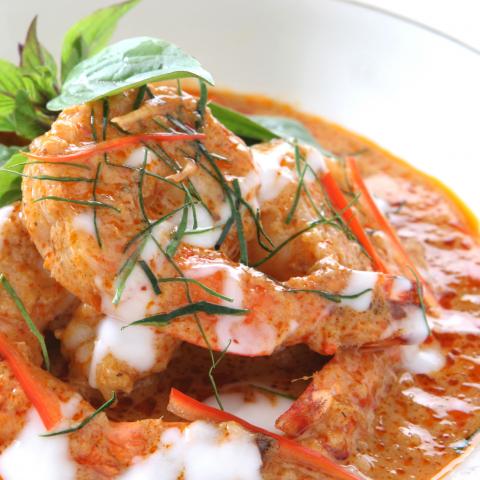



















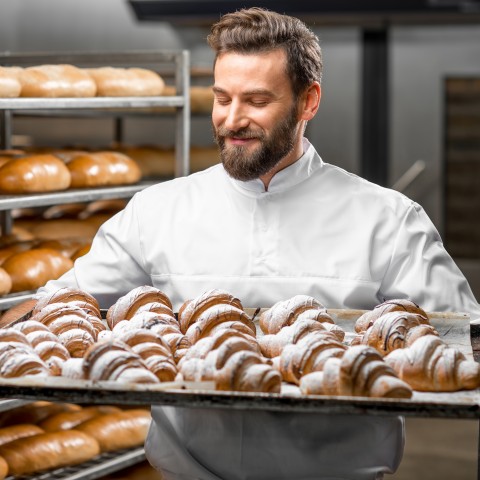









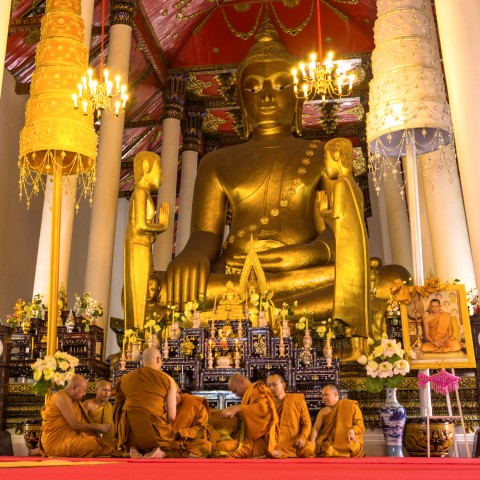










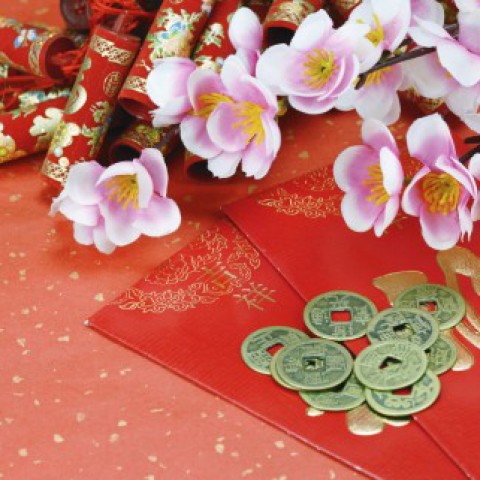





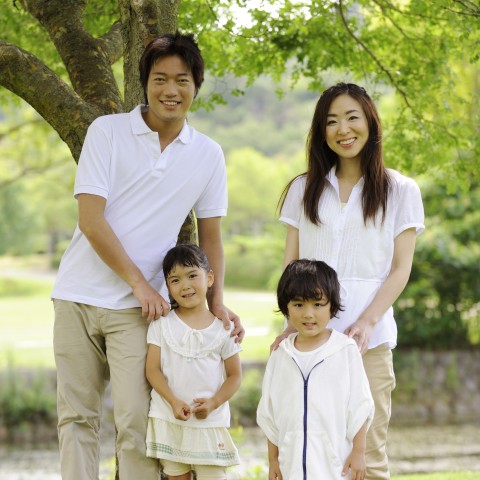









![How to ไหว้ [wâi]](https://wordlist.languagepod101.com/wordlist/media/25584&v=medium.jpg)


